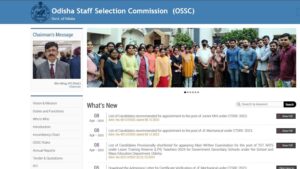Table of Contents
Context: The article talks about a recent order issued by the Director General of Health Services (DGHS) that mandates doctors in Central government hospitals prescribe only generic medicines instead of branded drugs. However, the article highlights that many doctors in India have apprehensions about the quality of generic medicines in the Indian market, as India lacks robust legal and scientific standards for ensuring the interchangeability of generic medicines. The article also highlights the need for the government to address these concerns and build confidence among doctors in the quality and effectiveness of generic medicines.
Spare the Rod and Change the Law Background
What is Generic Medicine?
- Generic medicine or generic drugs can be defined as affordable versions of branded drugs which are brought into the market once the original drug manufacturer’s patent expires.
- Generic medicines have the same potency, quality, and implications and work in an identical manner as the branded drug.
- They are often more affordable than their brand-name counterparts, making them accessible to a larger population.
Need for Generic Medicine in India
- Affordability: In a country like India where high drug prices pose a barrier to accessing healthcare, generic medicines play a crucial role in making essential medications accessible to a larger population.
- According to a survey by National Pharmaceutical Pricing Authority a major portion of hospital bills – 55% – is payments for medicines and other consumables in India.
- According to the National Health Accounts Estimates 2019-20, out-of-pocket expenditure (OOPE) constituted 47 % of the Total Health Expenditure.
- In India, about 55 million people are annually pushed below the poverty line due to healthcare payments.
- Accessibility: Generic medicines play a crucial role in India’s diverse and remote areas by bridging the healthcare access gap.
- Disease burden: The high prevalence of disease burden in India is directly related to the lack of affordable healthcare. Generic medicines can help in reducing the financial burden, thereby improving healthcare outcomes.
Lion’s share of the Generic drugs market
- The low cost of generics is an alternative to branded drugs and hence generics dominate, making up for 70 to 80% of the retail market.
- As India’s population grows, especially the aging population has significantly increased the demand for generic medicines on account of their affordability and effectiveness, which is same as branded medicines.
- According to some study, the global generic drugs market was worth USD 390.57 billion in 2020 and is projected to reach approximately USD 574.63 billion by 2030, attaining a compound annual growth rate (CAGR) of 5.59 per cent between 2021 and 2030.
Decoding the Editorial
The article starts with discussing some of the concerns associated with the generic medicines in India.
- Quality of generic medicines:
- The article explains that many Indian doctors, both in the public and private sectors, are reluctant to write prescriptions using only generic names due to their lack of trust in the quality of generic medicines available in the Indian market.
- One of the reasons for this lack of trust is the absence of appropriate legal and scientific standards in India, which would provide guarantees to doctors regarding the interchangeability of generic drug with the innovator drug.
- The issue of bio-equivalence:
- The article contrasts India’s situation with the United States, where the government mandated as early as 1977 that most generic drugs be tested on human volunteers to assess their bioavailability—the rate at which the drug dissolves in the bloodstream.
- This testing helps determine if the generic drug is bioequivalent and therapeutically interchangeable with the innovator drug.
- Bioequivalence is the biochemical similarity of two (or more) drugs that share the same active ingredient(s) and desired outcome(s) for patients.
- In India, the requirement for bioequivalence testing was only introduced in 2017, and even then, the regulations were vague.
- Furthermore, the recommendation by the Drugs Technical Advisory Board (DTAB) to test existing generic drugs, approved before 2017, for bioequivalence was ignored by the government.
- As a result, a large majority of drugs in the Indian market have never been tested for bioequivalence, which raises concerns about their quality and interchangeability.
- Stability testing:
- The article contends that another massive problem in India’s generic medicine ecosystem is the issue of stability testing.
- Stability testing is a process used to evaluate the quality, safety, and efficacy of pharmaceutical products over time. It is a key challenge in manufacturing any drug.
- If a drug is unstable, it may decompose and lose its efficacy, resulting in potential harm to patients.
- The article states that stability testing requirement is common worldwide and was made mandatory in India only in 2018, after facing significant opposition from the pharmaceutical industry.
- However, the new regulations not only lacked scientific rigor but also did not apply retrospectively to generic drugs approved prior to 2018. As a result, many generic medicines in the Indian market have not undergone mandatory stability testing.
- Way forward:
- Given these issues related to the quality of generic drugs, it is not appropriate for the DGHS to force doctors to prescribe drugs by generic names.
- Rather, the DGHS must work towards resolving the genuine concerns being raised by doctors. A starting point would be to ask for regulations which require pharma companies to identify on their packaging whether a drug has been tested for bio-equivalence and stability as required by the law.
- Building the confidence of doctors in generic medicine serves public interest better than threatening them with punitive action for failing to comply with directives on mandatory prescription of drugs by their generic names.
Beyond the Editorial
Other challenges associated with the generic medicine in India
- Due to profit driven nature of any pharmaceutical product, pharmacies in India are not enthusiastic to sell generic medicine.
- Illegitimate drugs have been a challenging issue for India over quite a period of time. In 2018, the Central Drug Standard Control Organization (CDSCO) identified nearly 4.5 per cent of all generic drugs circulated in the domestic market to be substandard.
- Another issue is with the counterfeit medicines sellers who operate at the retail level and procure the substandard medicines from dubious suppliers.
- Also, many fraud chemist shops sell the counterfeit drugs illegally using the name of a pharmaceutical company that remains completely unaware of the incident.
Initiative by the government to promote generic medicine in India
- Jan Aushadhi Stores: The Government, in June 2015, had proposed to open 1000 more stores under the ‘Jan Aushadhi Scheme’ to make available quality generic medicines at affordable prices through these special outlets.
- Medical Council India (MCI) also ordered the medical community to follow its 2016 notification in which the MCI had amended the Clause 1.5 of the Indian Medical Council (Professional Conduct, Etiquette and Ethics) Regulations, 2002 mandating doctors to prescribe medicines by generic names in place of brand names.
- In 2017, Central Govt, ordered doctors to prescribe generic formulations of medicines, as opposed to specific brands.


 Daily Quiz 18 April 2025
Daily Quiz 18 April 2025
 OSSC CGL Syllabus 2025 and Exam Pattern ...
OSSC CGL Syllabus 2025 and Exam Pattern ...
 AI and its Regulation in India, Limitati...
AI and its Regulation in India, Limitati...





















